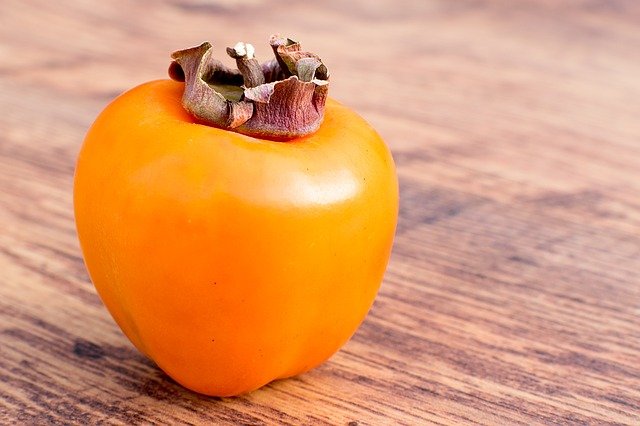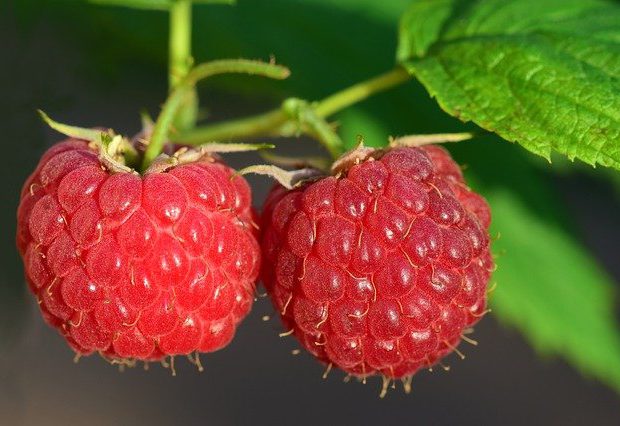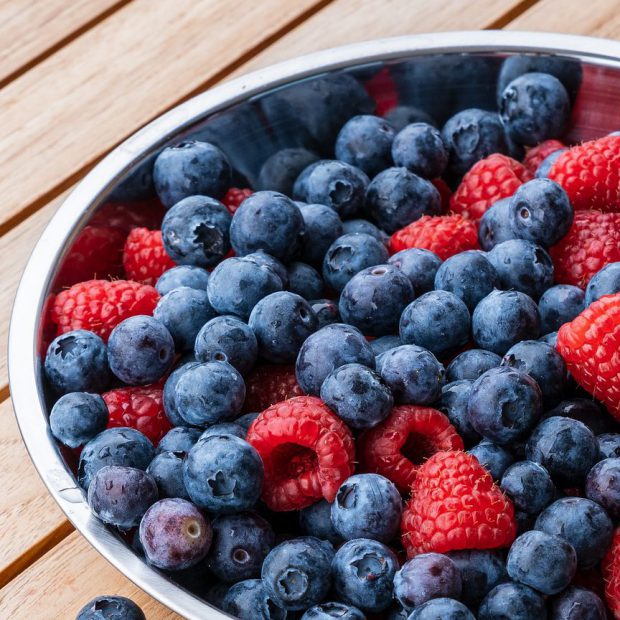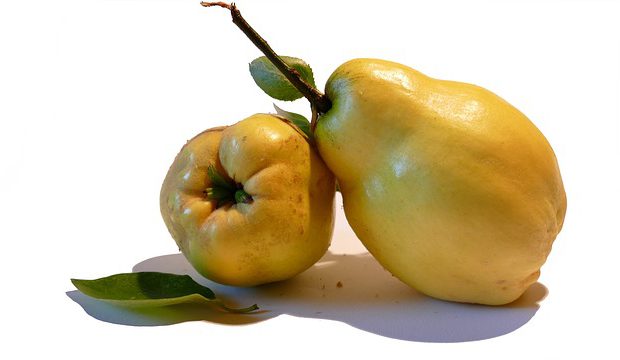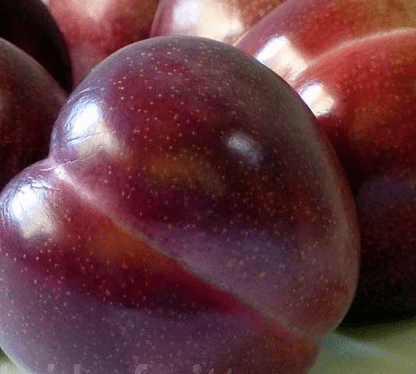Persimmons – Fuyu
Like the tomato, persimmons are not commonly considered to be berries, but morphologically the fruit is in fact a berry. The tree Diospyros kaki is the most widely cultivated species of persimmon. Typically the tree reaches 4.5 to 18 metres (15 to 60 ft) in height and is round-topped. It usually stands erect, but sometimes can be crooked or have a willowy appearance.The leaves are 7–15 centimetres (2.8–5.9 in) long, and are oblong in shape with brown-hairy petioles 2 centimetres (0.8 in) in length. They are leathery and glossy on the upper surface, brown and silky underneath. The leaves are deciduous and bluish-green in color. In the fall, they turn to yellow, orange, or red.
Persimmon trees are typically dioecious, meaning male and female flowers are produced on separate trees. Some trees have both male and female flowers and in rare cases may bear a perfect flower, which contains both male and female reproductive organs in one flower. Male flowers are pink and appear in groups of 3. They have a 4-parted calyx, a corolla, and 24 stamens in 2 rows. Female flowers are creamy-white and appear singly. They have a large calyx, a 4-parted, yellow corolla, 8 undeveloped stamens, and a rounded ovary bearing the style and stigma. ‘Perfect’ flowers are a cross between the two.
Persimmon fruit matures late in the fall and can stay on the tree until winter. In color, the ripe fruit of the cultivated strains range from glossy light yellow-orange to dark red-orange depending on the species and variety. They similarly vary in size from 1.5 to 9 cm (0.6 to 3.5 in) in diameter, and in shape the varieties may be spherical, acorn-, or pumpkin-shaped. The flesh is astringent until fully ripe and is yellow, orange, or dark-brown in color. The calyx generally remains attached to the fruit after harvesting, but becomes easy to remove once the fruit is ripe. The ripe fruit has a high glucose content and is sweet in taste.






